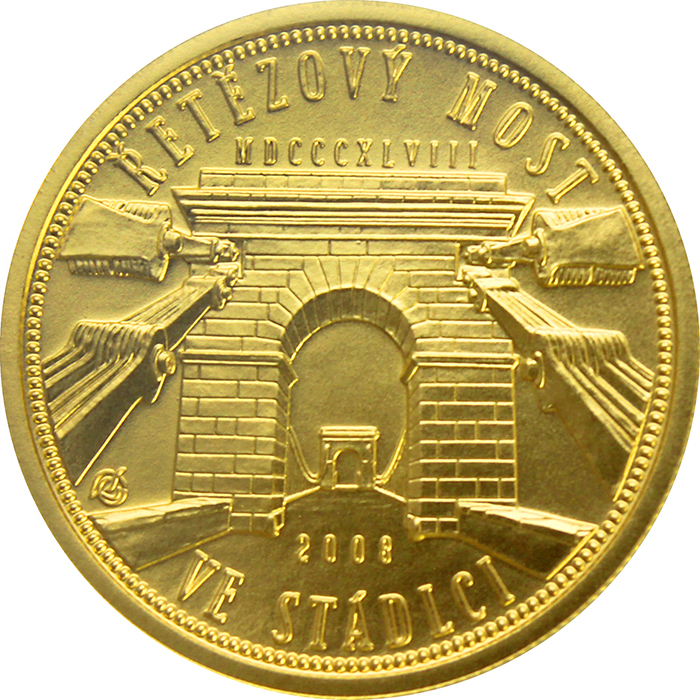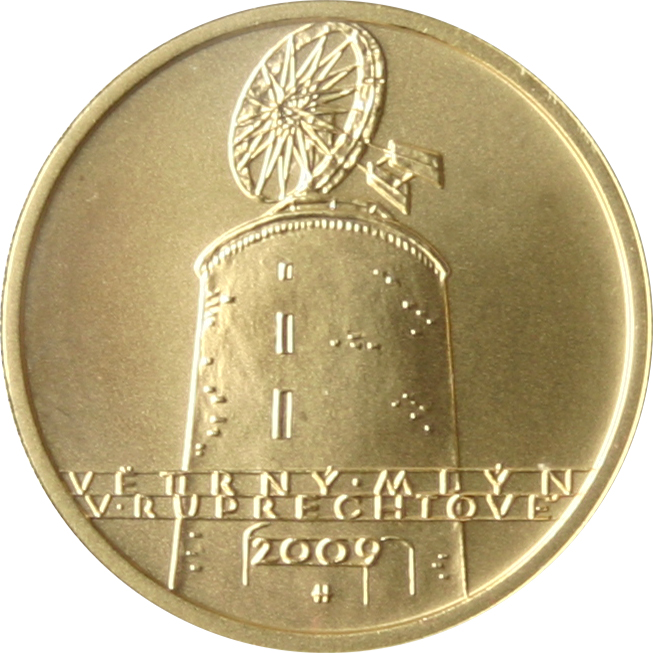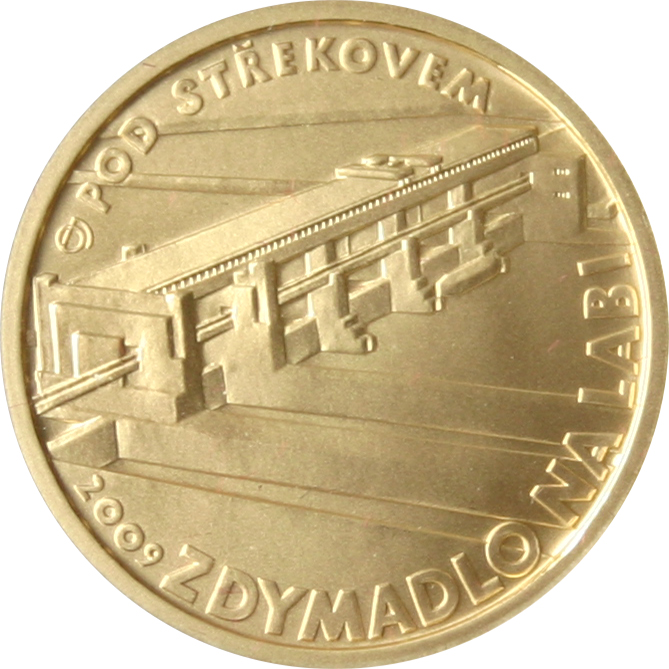Gold Coin 2500 CZK Shevčínský důl Příbram 2007 Standard
The product cannot be ordered now.
NOT IN STOCK
Detailed description
1/4 Oz gold coin - Cultural monuments of technical heritage - Ševčín Mine in Příbram
On the obverse side of the coin there are stylized heraldic animals from the great state emblem and on the intercircle in the form of a cogwheel there is an unsealed inscription with the title of the cycle "CULTURAL MONUMENTS OF TECHNICAL HERITAGE". In the lower part of the coin, the name of the state "CZECH REPUBLIC" and the denomination with the abbreviation of the monetary unit "2500 CZK" appear in an oval medallion. The mint mark of the mint that minted the coin is placed at the lower right edge between the Moravian eagle and the name of the state.
The reverse of the coin shows the shaft building of the Ševčina Mine with the mining tower and the building of the engine room. In the lower right part of the engine room is the year of mintage "2007" and above it is the period town emblem of Březové Hory. In the lower part of the coin three miners are depicted in an oval medallion at work in the mine. On the intercircle in the form of a cogwheel there is an unsealed inscription "ŠEVČINSKÝ DŮL - PŘÍBRAM - BŘEZOVÉ HORY". The author of the coin's design is Mr Luboš Charvát. His initials, the stylized interconnected letters "LCH", are located above the upper right edge of the engine room building.

The Příbram Ševčín vein, the most important in the mining district, gave its name to the most popular mine in Příbram. At the instigation of the chief mining authority in 1812, it was proposed that a new shaft should be sunk on the Martyr's Vein to enable increased extraction from the Vojtěšská, Wolfgangská and Maria Pomocnice veins.
In 1813, the first work on the shaft was started. The shaft was dug along the vein, which falls perpendicularly downwards. The transport of ore to the processing plant was solved by the Ševčínská adit, which opens near the Mariánská adit on the road leading to the Vojtěch mine. The mine was abandoned after World War I and further activity did not take place until after World War II.
The new shaft was called the Emperor Franz shaft, later the Emperor Franz Joseph shaft ("Francšachta"), and since the coup it has been called the Ševčínský mine. The handsome shaft building is 37.5 m high. During the mining disaster in 1892, many miners were saved by this shaft, and death followed them.
This product is part of the following product sets:
Cultural monuments of technical heritage seriesProduct Specifications
Application form
Thanks to our position on the market, we can try to provide you with a product that is currently sold out or unavailable for a longer period of time. Simply fill in the application form and we will contact you as soon as we are able to secure the product.
Filling in the application form is not binding for you.
Buyback contact form
We will be happy to buy investment metals purchased from us or from our competitors. Our customers always get the highest price offered at any given time. Fill out the form below and we will contact you. Thank you for your trust.

























